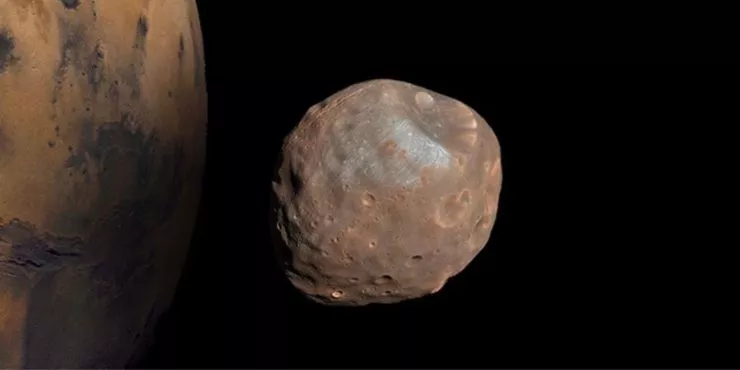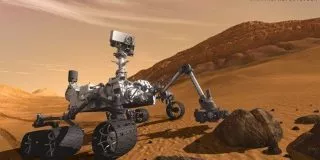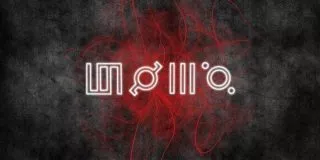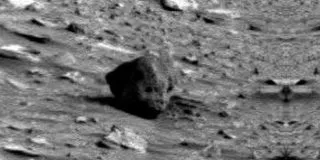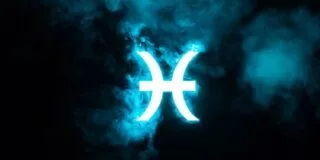If you have a keen interest in all things related to outer space and the planets, you might already have heard about Phobos.
However, if you’re new to the world of outer space, maybe you’ve never heard of Phobos before.
Let’s find out a little more about this satellite and what makes it such an interesting part of outer space.
It is one of Mars’ two natural satellites.
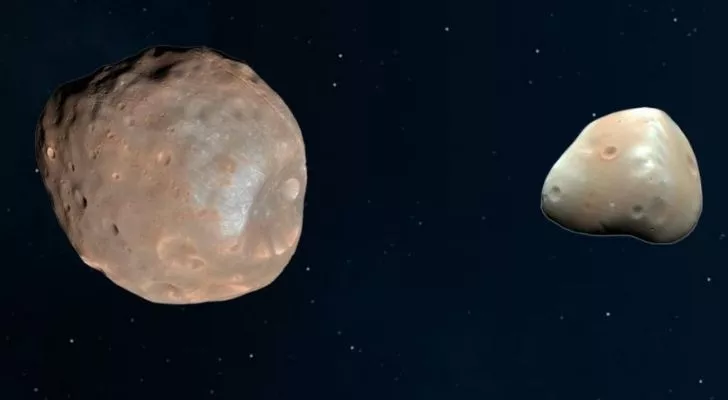
Mars has just two natural satellites or moons, and Phobos is the larger of the two.
It has an irregular shape but spans an average of 13.7 miles (22 km) in diameter.
The second of the natural satellites, Deimos, is just a seventh of the size of Phobos, despite still being more than 1.9 miles (3 km) in diameter.
Phobos is the inner moon, while Deimos is the outer moon.
Phobos was discovered in 1877.
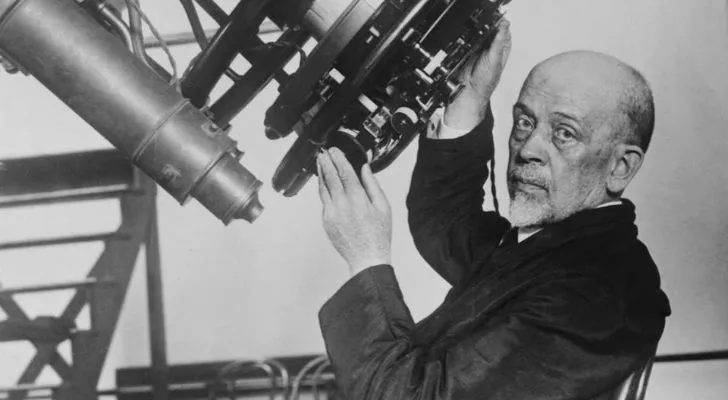
While scientists are still discovering new and interesting things in outer space, Phobos is certainly not one of the more recent discoveries.
Asaph Hall, 1829-1907, is credited with the discovery of Phobos and Deimos.
Hall, an astronomer, born in Connecticut, USA, was responsible for several other discoveries related to outer space, but none as famous as the discovery of Mars’ moons.
Hall reported that his wife, Angeline Stickney, was the person who encouraged him to search for Mars’ moons when the planet came close to Earth in 1877.
He discovered both the moons within just six days of each other in August 1877.
The moon is named after the Greek god Phobos.
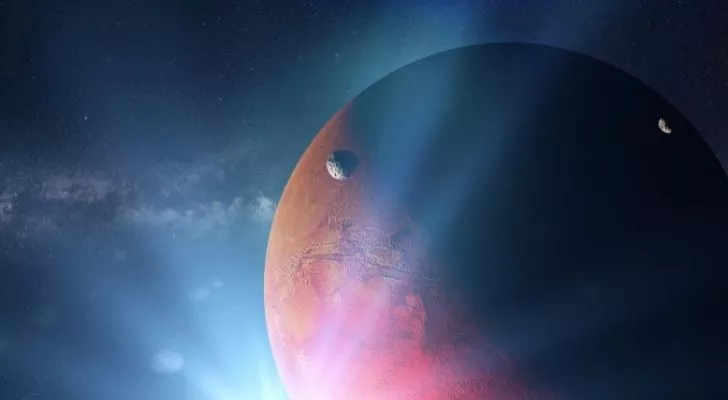
The Greek god Phobos personified fear and was the son of Ares and Aphrodite (Mars and Venus, respectively).
The word Phobos relates to the modern word “phobia,” also meaning fear.
The other moon of Mars, Deimos, is also named after a Greek god, this time meaning “dread.”
Together, the Greek Godbrothers joined their father on the battlefield – one of them representing the fear felt during battle and the other representing the feeling of dread and wanting to run away.
With the moons of Mars, the names could represent their large size and the closeness of the orbit to the planet Mars.
The composition of Phobos isn’t what you might think…
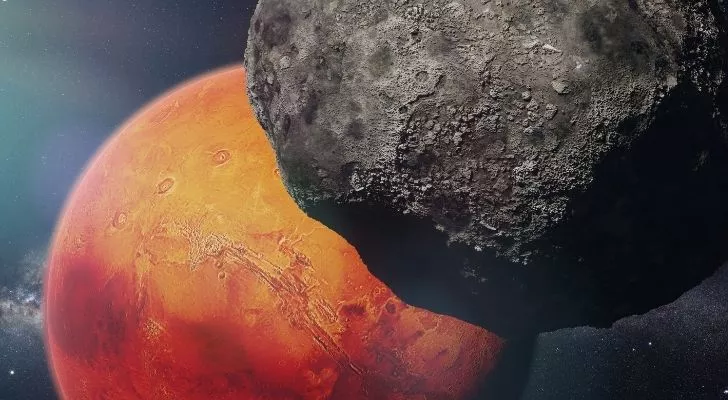
It’s common to think that moons are just giant rocks floating around in space or around the planets.
However, the composition of Phobos is more interesting than that.
A large part of both Mars’ moons is indeed carbon-rich rock, but that isn’t all.
Scientists believe that both Phobos and Deimos are made up of rock and ice.
More recent studies into Phobos indicate that the outer surface is covered with a layer of dust approximately one meter thick.
Phobos’ largest crater is called “Stickney.”
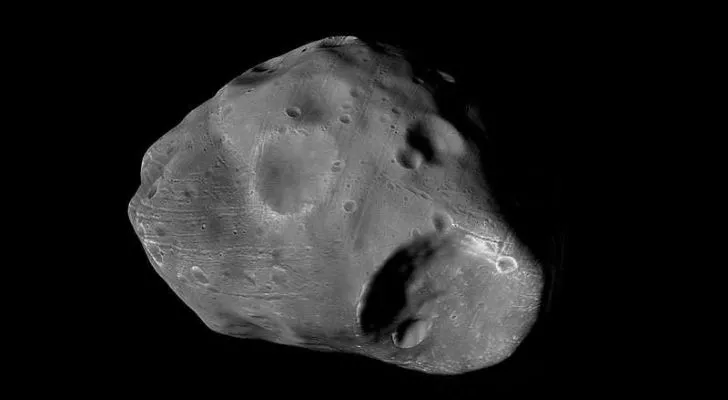
The largest crater of Phobos was aptly named after the wife of discoverer Asaph Hall.
His wife, whose full name was Chloe Angeline Stickney Hall, strongly encouraged her husband to keep searching for the satellites, hence the reason her surname “Stickney” was used as a name for the largest of the craters.
However, the crater was not named until 1973, almost 100 years after the discovery of Phobos.
The name was given by a committee meeting of the International Astronomical Union.
Within the crater of Stickey is a smaller crater, which is roughly 1.2 miles (2 km) in diameter.
To many people, this would seem like a sizeable crater. However, since Stickney itself is a huge 5.6 miles (9 km) in diameter, the smaller crater, named Limtoc in 2006, doesn’t seem so large after all.
A total of 17 craters on Phobos have been named – some of them are named after astronomers, while others are named after fictional characters, such as Limtoc, who was a character in the popular novel Gulliver’s Travels.
Phobos is considered to be close to Mars.
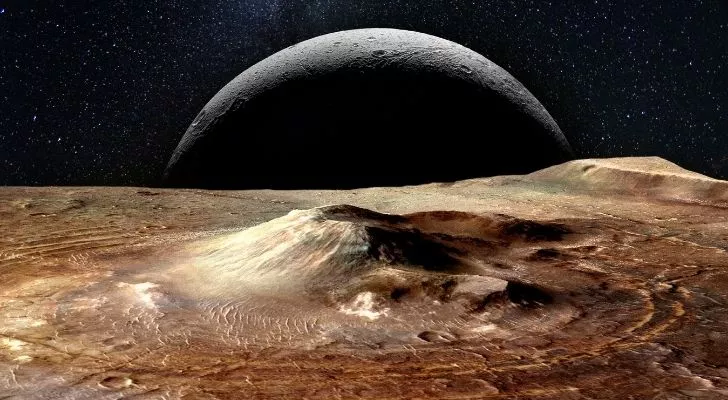
Phobos has a total orbit distance of 5,826 miles (9,376 km) from Mars, which is a distance most of us can’t even fathom.
The distance is further than San Francisco, California, USA, to Berlin, Germany. However, this actually isn’t considered to be very far when it comes to planets and their satellites.
In fact, this distance between satellite and planet is the closest which has been discovered in the entire solar system.
The orbit period of Phobos is 7.7 hours, and Phobos moves faster than Mars does.
It moves almost twice as fast as the planet it orbits.
Mars and Phobos become closer every year.
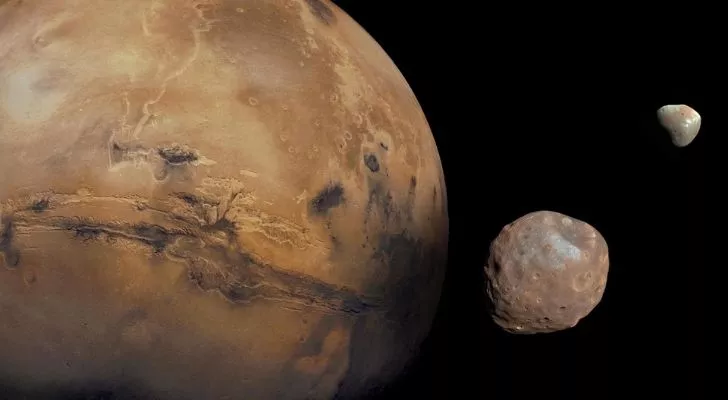
Every hundred years, Phobos gets closer to Mars. The difference in the distance every hundred years is only around 6 feet 7 inches (2 meters).
However, scientists have calculated that if the satellite Phobos continues to move closer to Mars at its current rate, within 30-50 million years, Phobos will not be the same as we know it today.
The moon Phobos could either collide with the planet Mars or break up into a planetary ring.
Planetary rings are made up of materials such as dust or moonlets (very small natural satellites) and could last as short as one million years or as long as 100 million years.
Most of the large planets in the solar system, including Jupiter and Neptune, have planetary rings.
The most famous are those which belong to Saturn, the second-largest planet of all.
There are images of Phobos.
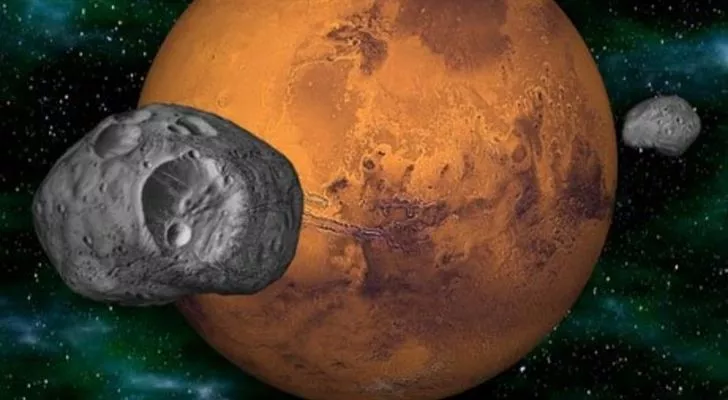
Luckily, there are various images in existence for people interested in finding out more about Phobos and Deimos.
These have been made possible by rovers that made it to the surface of Mars and took photos of the moons.
From the National Aeronautics and Space Administration (NASA), images have been taken from the rovers Spirit, Opportunity, and Curiosity.
Curiosity has been credited with taking some of the most interesting and unique images and footage, including Phobos eclipsing the sun.
Now you know more about Phobos and its discovery, you can watch footage of the satellites in action or view some of the incredible images taken from the surface of Mars!
